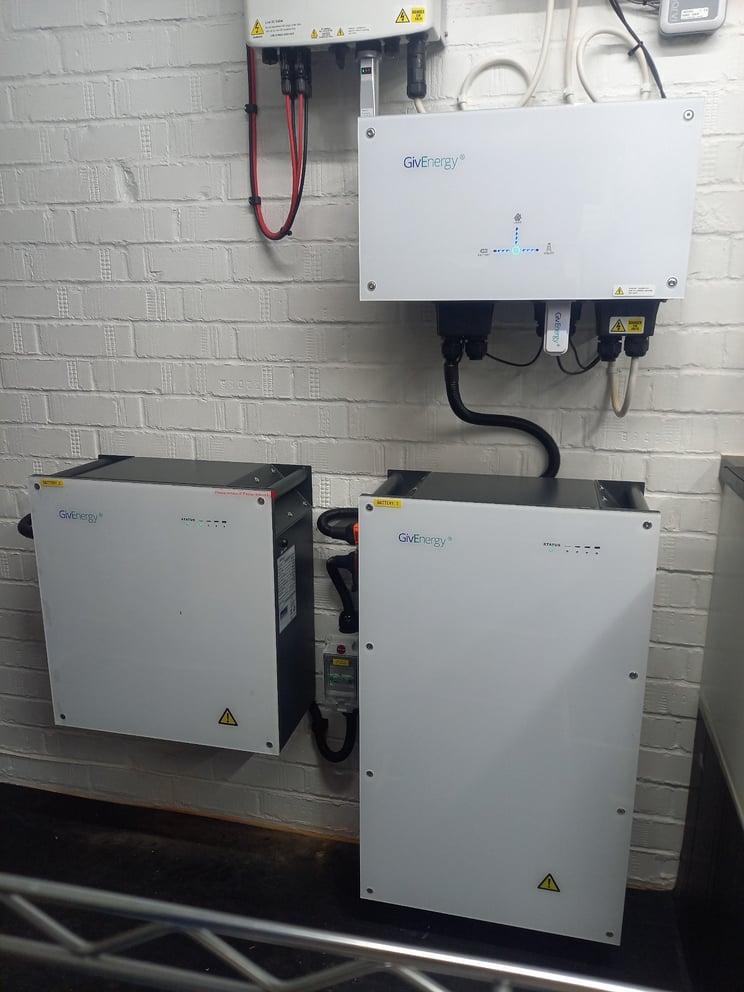One of the key issues surrounding battery installation is where to locate the battery in a property. From both a practical and a health and safety perspective, location matters with battery installations, so read on to find out the factors that go into locating your battery.
Health and Safety
The most important consideration is, of course, health and safety. While all the batteries Spirit Energy installs are safe and have undergone stringent safety checks, a large battery in your home always carries a risk. If a fire starts elsewhere and spreads to the battery, it can act as an accelerant to the fire or in a worst case some battery types can become explosive.
With this in mind, guidelines are issued by the British Standards Institution relating to the positioning of a residential battery in a building. Ideally, a battery should be located outside, but failing this, it should not be placed near other accelerants, fire exits, or escape routes such as stairwells or hallways that lead to an exit, or near supplies of natural gas such as kitchens. The BSI also recommends that battery storage units be kept away from sleeping areas due to the potential for toxic fumes if the units are damaged by fire.
In our experience at Spirit Energy, one of the most popular locations for a battery is the garage which keeps it away from living areas and on the outskirts of the property, while still being kept inside, typically near the main supply area. However, batteries can also be placed outside and can be mounted on a completely external wall. Some batteries will require a canopy or may require insulation around the unit as performance and capacity can worsen on a very cold day. Care should be taken that any flammable products, commonly found in garages, are not stored directly below the battery.
Ease of Access
These regulations also suggest that batteries should not be installed in loft spaces. This is not something most installers generally do purely because batteries tend to be extremely heavy, and access beyond the ground floor of the property is often very difficult given the weight of the units and small loft hatches. For example, a Tesla Powerwall 2 weighs in at 114 kg and, without specialist equipment, is difficult to transport up a flight of stairs, let alone into a loft space only accessible via a ladder. Some batteries, such as the modular GivEnergy models, are lighter but still have significant weight. Loft spaces also tend to get very warm in summer, where batteries will perform best at room temperature.
Another consideration is the ease of access to both the gateway and the battery itself. Both the Tesla Powerwall 2 and GivEnergy modules come with a "Gateway," separate from the battery itself, but which needs to communicate with the battery and control it. It's generally best if the two are close to each other, as a wired connection is recommended, and they should be installed and accessed easily in case of troubleshooting or maintenance work. The Gateway modules will typically need to be placed near your electric meter for best power cut protection provision.
Conclusion
Overall, the location of a battery is an important consideration, and here at Spirit Energy you will be connected directly to a technical designer who will be happy to talk you though every aspect of your battery installation. If you are considering a battery, with or without solar PV, give us a call during office hours on 0118 951 4490 or send an email to info@spiritenergy.co.uk to request a callback.
In the meantime, please check out our battery case studies for inspiration on where to locate your battery, and review our extensive knowledge bank articles on battery storage to get an overview of the topic.









